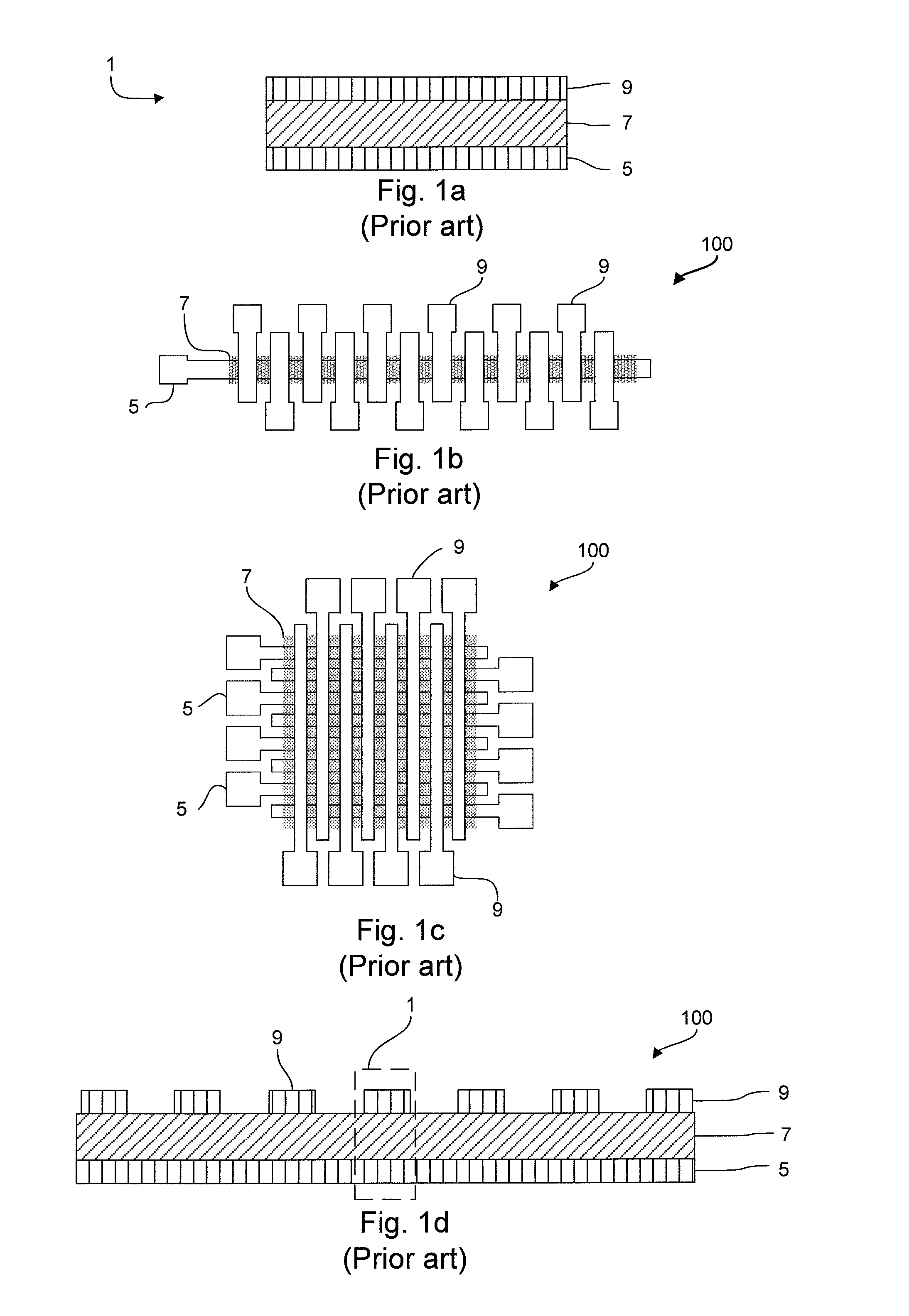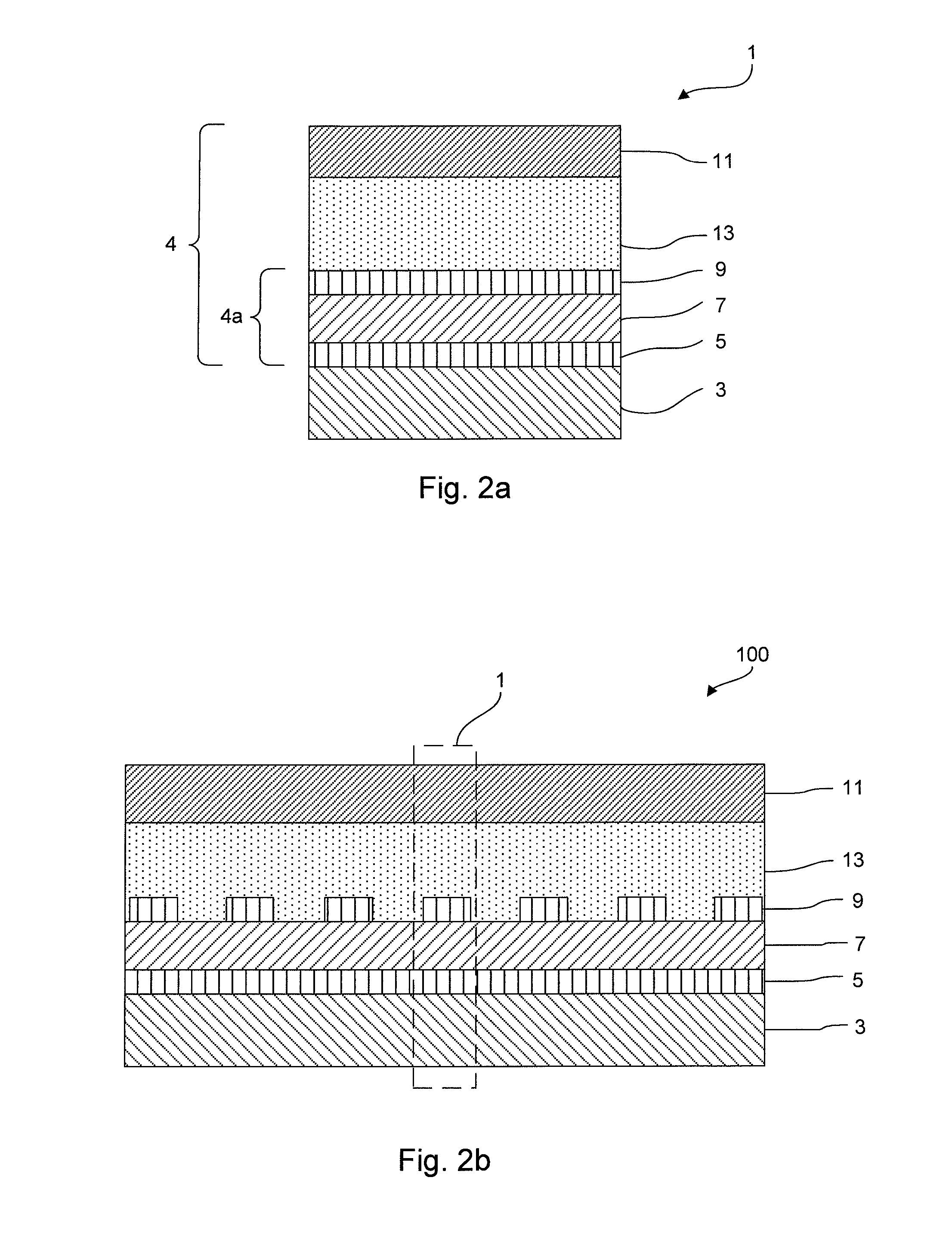Short circuit reduction in a ferroelectric memory cell comprising a stack of layers arranged on a flexible substrate
a technology of ferroelectric memory and flexible substrate, which is applied in the field of ferroelectric memory cells comprising stacks of layers arranged on flexible substrates, can solve the problems of increasing the risk of shorts, extremely difficult, if at all possible, to completely avoid dimensional change in such layers, and particular difficulty for these layers and the substrate to resist such for
- Summary
- Abstract
- Description
- Claims
- Application Information
AI Technical Summary
Benefits of technology
Problems solved by technology
Method used
Image
Examples
Embodiment Construction
[0057]FIG. 1a schematically illustrates a cross section view of an exemplifying prior art memory cell 1, illustrating a generic structure of such memory cell. The memory cell in question comprises a pair of electrodes in the form of layers 5,9 contiguous to a volume of an electrically polarizable substance, typically in the form of a ferroelectric memory material layer 7. Typically the memory cell 1 has a parallel-plate capacitor-like structure as shown. This simple structure is in strong contrast to memory cells in traditional memory technologies, where one or more transistors or other semiconducting elements are required in association with each cell, and the consequences for low cost manufacturing are dramatic. A plurality of such memory cells 1 may be arranged side by side on a common substrate (not shown in FIG. 1a), each cell having the generic structure shown in FIG. 1a, where electrical access to each cell may be by wire connection to each of the two electrodes. Depending on...
PUM
 Login to View More
Login to View More Abstract
Description
Claims
Application Information
 Login to View More
Login to View More - R&D
- Intellectual Property
- Life Sciences
- Materials
- Tech Scout
- Unparalleled Data Quality
- Higher Quality Content
- 60% Fewer Hallucinations
Browse by: Latest US Patents, China's latest patents, Technical Efficacy Thesaurus, Application Domain, Technology Topic, Popular Technical Reports.
© 2025 PatSnap. All rights reserved.Legal|Privacy policy|Modern Slavery Act Transparency Statement|Sitemap|About US| Contact US: help@patsnap.com



